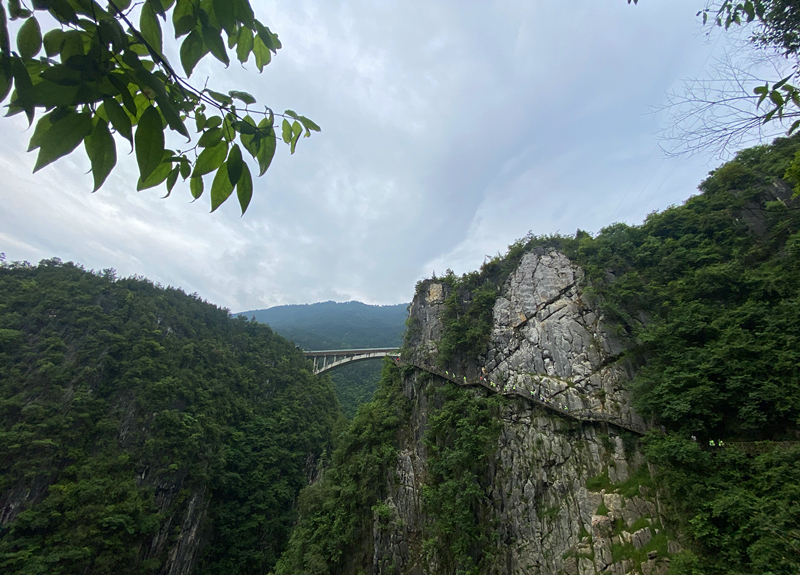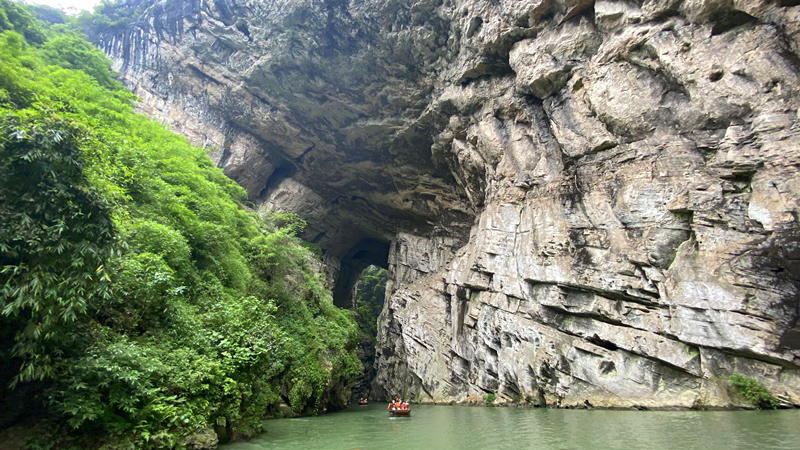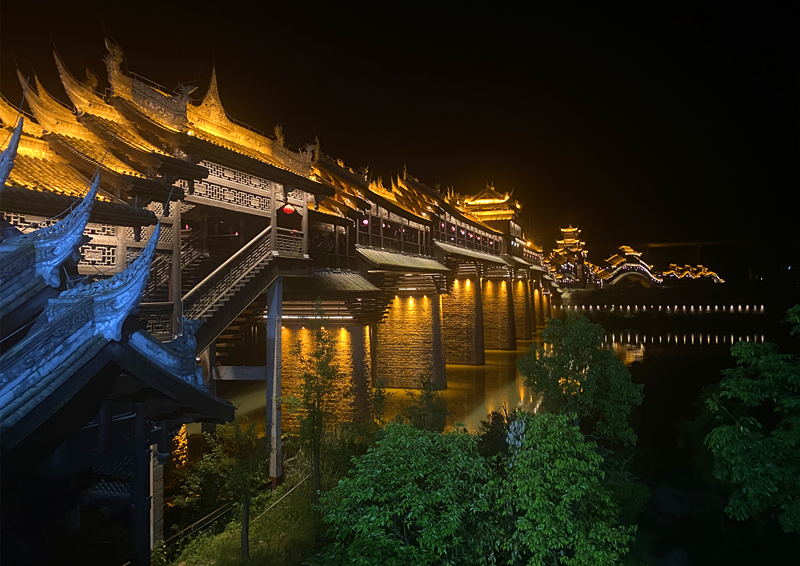Qianjiang builds China's 'canyon city'
- By Zhang Rui
 0 Comment(s)
0 Comment(s) Print
Print E-mail China.org.cn, May 22, 2021
E-mail China.org.cn, May 22, 2021
The canyon geographical features distinctive to Qianjiang District of Chongqing provides an incentive for the area to strive for a more competitive national tourism attraction.

The district, with its rare and unique canyons, karst caves, underground rivers, and mountains spanning seven geological ages, is only 10 kilometers from the city center.
Wang Min, head of operating department of Chongqing Balahu Co. Ltd., told China.org.cn that as more and more of its scenic attractions have become known, the number of visitors has continued to rise. She noted that, previously, tourists were from nearby cities and provinces; now, however, there are more and more tourists from farther places of the country.
Feng Xiaoli, vice general manager of Chongqing Balahu Scenic Spot Management Co. Ltd., added that the tourism profile is also changing. "Previously many guests were elderly people. Now, we have seen more young visitors." Feng also revealed more supporting facilities would be added in the coming years.

Last year, Chen Min'er, secretary of the CPC Chongqing Municipal Committee, issued instructions for Qianjiang to build itself into a "canyon city."
Zhuoshui scenic spot, as the most famous and popular spot in Qianjiang District, has been attracting tourists from all over the world through the powerful appeal of its cultural and tourism resources, and has officially been approved as national class-5A scenic spot at the end of 2020.
However, Qianjiang will strive for more, working hard to apply for another 5A scenic spot, the Grand Canyon of Qianjiang during the 14th Five-Year Plan period (2021-2025), Wang Min said.
Qianjiang currently has seven 4A scenic spots, and in Chongqing's plan, there will eventually be 10 of these forming the tourism matrix in the area in the coming years. Besides the magnificent natural mountains, rivers and canyons, the local ethnic Tujia people's abundant cultural features, including their uniquely beautiful architectures as well as folk song and dance, also added to the attractions in the rural and cultural tourism.

During the past May Day holiday, Qianjiang received 1.58 million tourists and grossed 794 million yuan in tourism revenue. More than 100,000 people in this area are engaged in tourism business, many of them were lifted out of poverty as a result. In Zhuoshui Ancient Town alone, more than 3,000 jobs were created for local people.
To facilitate and attract more tourists, Qianjiang is also building transportation infrastructures including an airport, high-speed railways and roads. The district has ambitious vision: in 2025, the tourism matrix will be basically established, and there will be 42 million tourists coming to Qianjiang, and the comprehensive tourism revenue will hit 2.7 billion yuan annually, according to local government's plan.






Go to Forum >>0 Comment(s)